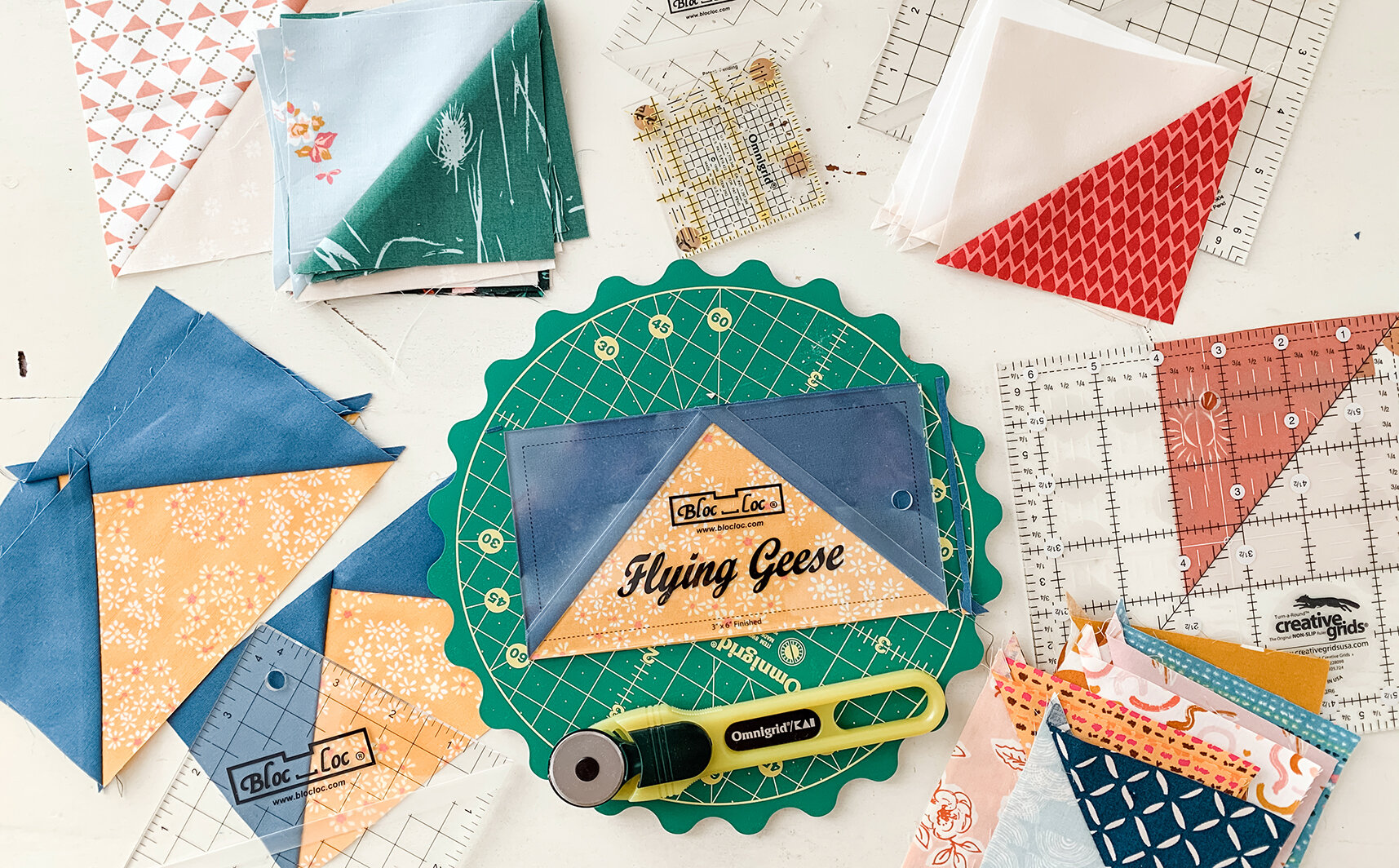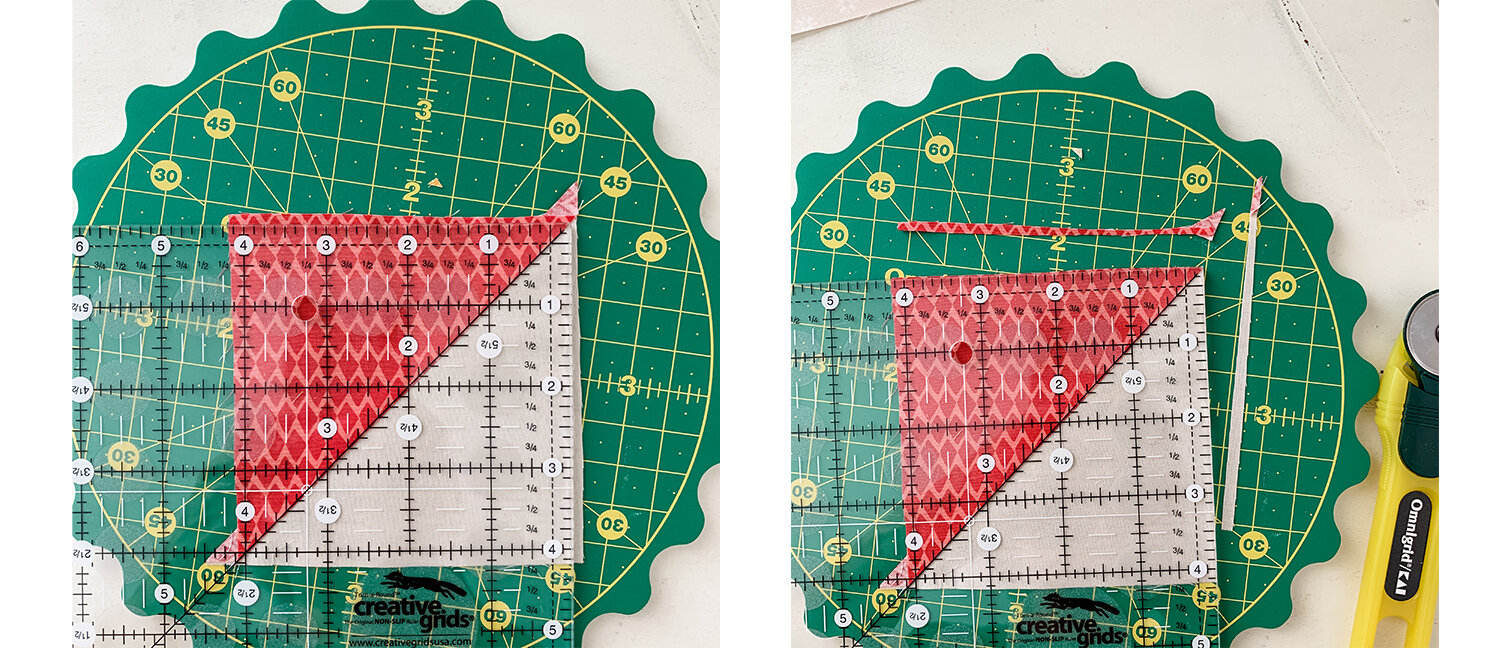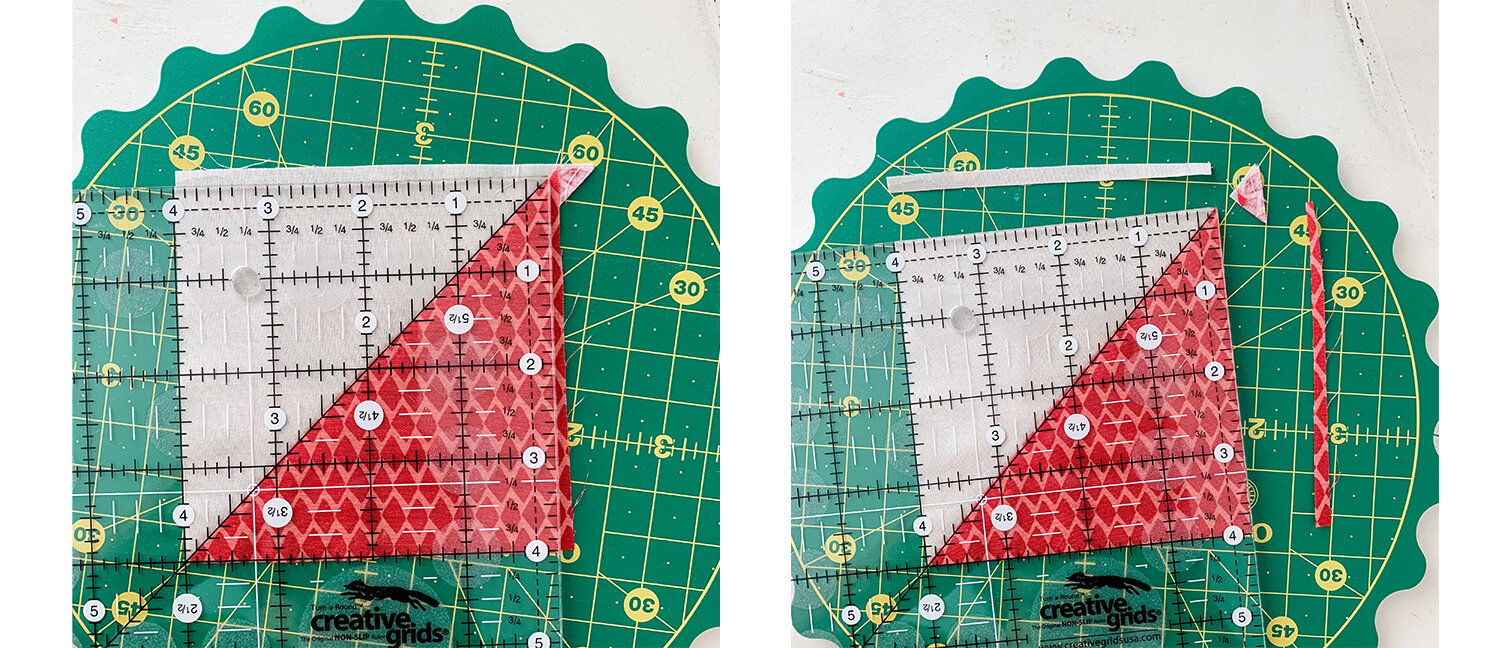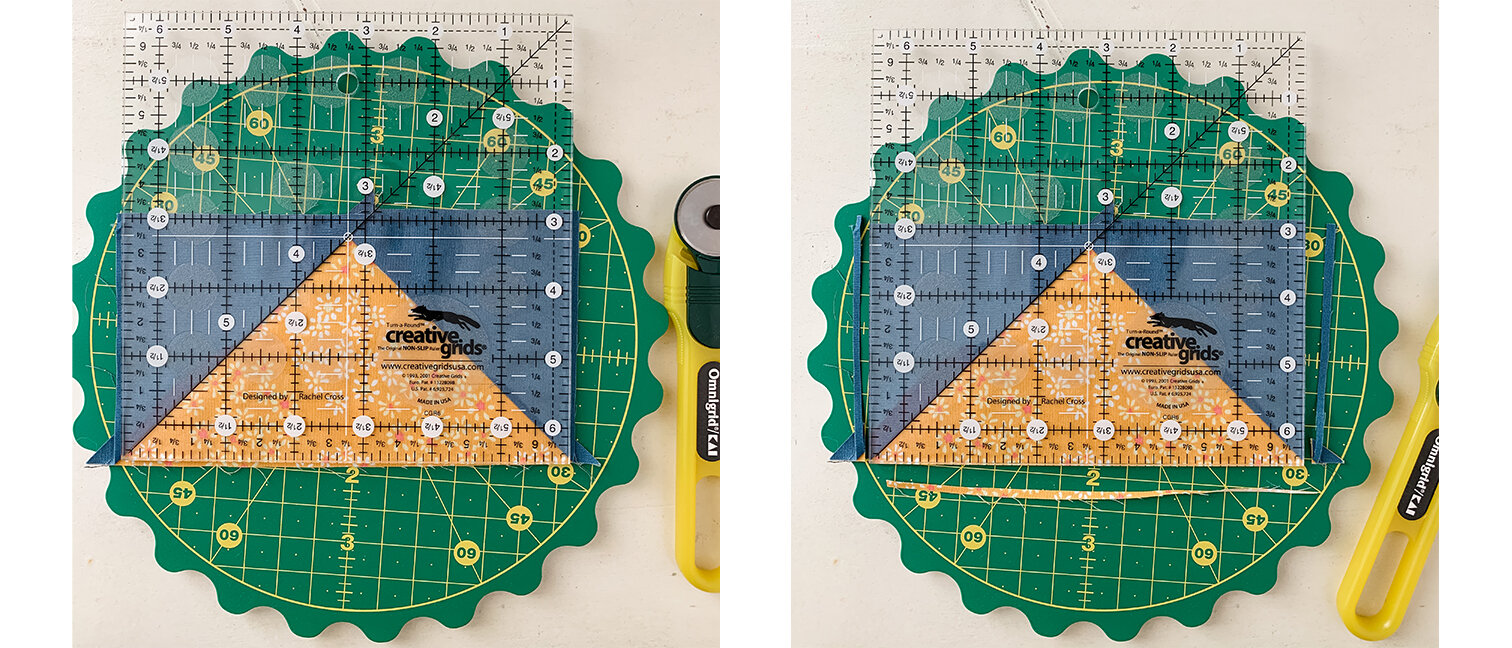Trimming HST and Flying Geese Units
As a pattern designer I strive to make my patterns as easy as possible for all level of quilters to follow and for each maker to finish their quilt with true to size blocks and sharp points on units like Half-Square Triangle units (HST) and Flying Geese Units. Tips and tutorials make for better patchwork and in a recent discussion with my quilt testers group I realized many newer quilters are unsure of how to trim up units like Half-Square Trangkes and Flying Geese.
You’ll find many tutorials on this blog about how to make these different sort of units but I’ve not addresses directly on how to trim these units down to size if you don’t have specialty rulers like my favored Bloc_Loc Rulers. This seemed the perfect time to add this lesson as I’ve a new quilt pattern coming out in October that utilizes several different types of units.
Before we get into trimming of these two unit types you can review unit construction on these earlier blog posts:
Trimming HST units
Half-Square Triangles are the easiest units to trim to size and can be done without any specialty rulers. I’m using a left over HST unit from making Sweet Home roofs as an example in this tutorial.
Stitch two triangles together using a 1/4” seam allowance or make HST units according to a pattern instructions. Press unit open.
For this example I’m using a 6-1/2” square Creative Grids ruler that has a 45° diagonal line marking as well as the normal grid line markings. A square ruler works best for HST units.
In the above left image, use the ruler to size up the HST to see what usable size can be made by lining up the 45° marking with the seam line and making sure there’s at least a 1/4” seam allowance on all side. As you see, a 4’’ square or smaller can be made from this HST unit.
With the ruler in position, trim the top and right sides of the HST with a rotary cutter as seen in the above right image. Reverse these instructions if you’re left handed.
If working on a Omnigrid 8” Rotating Mat, rotate everything 180° without disturbing the HST. If on a stationary mat, turn the HST so the trimmed sides are opposite of their starting point.
Slide the ruler down so the diagonal marking still aligns to the seam line and the 4” markings line up with the newly trimmed edges. Trim the two remaining sides to square the HST. I’m using an Omnigrid 28 mm Rotary Cutter.
The image above uses the same method to trim a HST unit to 5” square using a regular 6-1/2” square ruler and a 6-1/2” square Bloc_Loc ruler.
Trimming Flying Geese Units
Flying Geese units take just a little more care when trimming and squaring to size. A regular square ruler is still the best tool for this job if you don’t have a specialty Flying Geese ruler for trimming.
I happen to have a square ruler the same width as what’s needed for my Flying Geese unit but a larger ruler would be just as useful but require a few more passes to cut since you could only cut up to two sides at once with a larger ruler.
Determine the cut size of your Flying Geese unit. In this case I need to trim my unit to 3-1/2” x 6-1/2”. Subtract 1/4” from the height of the unit. Example: 3-1/2” minus 1/4” is 3-1/4”. This is well marked on my ruler as it’s the center of this 6-1/2” ruler. Place the measurement mark (in this case 3-1/4”) on the point of the Goose. The point of the Goose is used as the reference point and will help establish the 1/4” seam allowance. Note how the 45° marking on the ruler lines up with one seam line on the unit and there’s enough fabric on all sides of the Flying Geese unit for trimming.
Trim both the sides and bottom edge of the unit as shown. If your ruler is larger, trim bottom and one side of unit.
Rotate the unit or mat so the Goose now points down. Align the 3-1/2” mark (or the cut size needed) with the trimmed bottom edge of the unit (now located at the top).
Trim the Goose point edge and remaining side, if necessary so all outside edges have been trimmed as needed to size which includes the 1/4’’ seam allowance.
Above shows the no-measure needed trimming of a Flying Geese unit using a Bloc-Loc Ruler.
There are other rulers on the market that are considered specialty rulers and cover more than one size of unit. I’ve only used the Bloc_Loc rulers but have heard good things about the Wing Clipper ruler from other quilters. Here are some examples available on Amazon using affiliate links:
Having all your units true to size will make patchwork assembly a breeze and no more fudging or wrestling your pieces into place. There’ll be no more clipped points, or wonky blocks. Taking time to trim and square up units is all part of the patchwork process and since you’ve already put in so much time and money into your beautiful quilt It’s well worth the extra effort to assure it’s made as well and as near perfect as it can be!
Happy trimmings!










